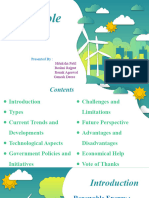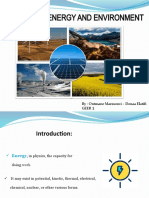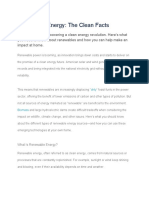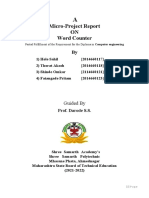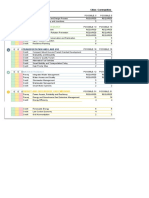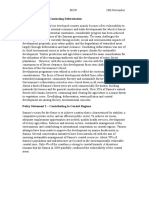0% found this document useful (0 votes)
12 views28 pagesLecture - 5
The document provides an overview of energy sources, emphasizing the importance of understanding energy systems for sustainability and climate change mitigation. It distinguishes between renewable and nonrenewable energy sources, detailing various types of each and their respective benefits and challenges. Additionally, it highlights the urgency of transitioning to renewable energy and the need for policy support, technological advancements, and public engagement to address climate change.
Uploaded by
Raiyan Zaman AdreyCopyright
© © All Rights Reserved
We take content rights seriously. If you suspect this is your content, claim it here.
Available Formats
Download as PDF, TXT or read online on Scribd
0% found this document useful (0 votes)
12 views28 pagesLecture - 5
The document provides an overview of energy sources, emphasizing the importance of understanding energy systems for sustainability and climate change mitigation. It distinguishes between renewable and nonrenewable energy sources, detailing various types of each and their respective benefits and challenges. Additionally, it highlights the urgency of transitioning to renewable energy and the need for policy support, technological advancements, and public engagement to address climate change.
Uploaded by
Raiyan Zaman AdreyCopyright
© © All Rights Reserved
We take content rights seriously. If you suspect this is your content, claim it here.
Available Formats
Download as PDF, TXT or read online on Scribd
/ 28












